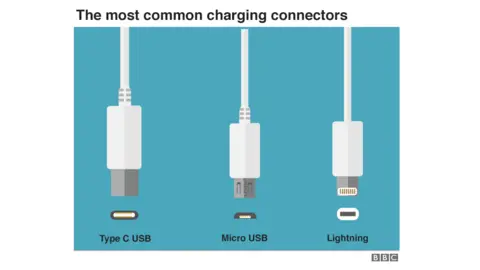In early 2004, the world was shaking it like a Polaroid picture, flocking to theaters to see what was going to happen with all those hobbits, and wondering if that Tom Brady guy was something special. Meanwhile, a few folks around the world were inventing the web as we know it now: a world-shaking social network was brewing in a Harvard dorm room. A Google employee was dreaming up the future of email in their spare time. The coolest cellphone of all time was just about to drop. The internet was still a niche activity, but that was about to change — and fast.
Technology
How online reviews shape the success of digital services in the tech era

We live in a digital era where technological interventions are at the core of society. These shape our everyday life and have become an integral part of a functioning society. Activities and services which used to be based on in-person features are now striving in the digital realm, influencing everything from the products we buy and the services we choose. As more and more products and services have embraced online technology, so has consumer behavior.
One massive online trend among consumers has been to rely on online reviews for a critical lens to navigate products and services online. Consumers leverage these reviews to assess services before making a commitment, and this consumer behavior encompasses all types of online activities, from online shopping platforms and cloud computing services to online casinos and gaming platforms. For operators and companies, reviews can be leveraged to enhance visibility, drive engagement, and also improve user experiences.
The influence of online reviews
The influence which online reviews hold cannot be overstated. Online review statistics show that in 2024, 95% of consumers said they read Google reviews before purchasing or engaging with a service online, which is an increase compared to 2020 when it was just 63% of consumers that read the site’s reviews. For Trustpilot, 89% of global consumers check online reviews as part of their buying journey. The prominence of review sites like Google, Yelp, Trustpilot, and specialized platforms are crucial for businesses, especially those operating in the tech space, since these reviews are the first touchpoint for customers with the brand.
Reviews are not only crucial for product-based businesses, since they also extend into service-oriented industries. These for example include software-as-a-service (SaaS), IT solutions, and online casinos. Take the online casino industry as an example: Reviews in the online casino industry are significant, since the market is highly competitive. Casinos therefore rely on user reviews in building trust and attracting new players.
The special case of online casino reviews
As already teased previously, online casinos are a prime example of how reviews can either make or break a business. The gambling industry has migrated to digital platforms, and as a result, players are now relying on online reviews to choose where to gamble. As the variety of online casino platforms continues to grow, market competitiveness increases, and the large variety becomes overwhelming for consumers. This is where online casino review sites like Casinostugan is crucial for players to compare and contrast the services and game selections of various casino platforms.
Unlike traditional e-commerce, where it is somewhat simple to assess product quality, online casinos are also subject to scrutiny regarding fairness, payout speed, customer support, and the level of security. This is why players turn to review platforms like Casinostugan to compare and contrast opportunities. For operators, maintaining a positive reputation on such platforms is critical to attract and retain players. Many casino operators therefore actively manage reviews, respond to feedback, and address negative comments transparently, in an attempt to create a trustworthy brand image.
How online reviews impact conversions
Research also found that online reviews have a direct impact on sales. Statistics shows that product pages featuring reviews achieve a higher conversion rate and more revenue per visitor compared to pages without reviews. This pattern goes across various industries, also for tech-based services. Whether it being for cloud storage, cybersecurity tools, or casino platforms, reviews can drive customer action as it provides social proof.
An interesting aspect is that a large number of reviews, even if they include some negative feedback, can still enhance credibility. This is because the average customer expects a balanced mix of reviews, resulting in users trusting platforms more when both positive and negative reviews are present. This added authenticity helps customers make more informed decisions.
How business leverage reviews for tech-based services
As much as reviews have many great features for consumers, so is it a tool for businesses to leverage as well. Online reviews have a power which businesses with tech-based services can harness, but this requires a strategic approach.
By seeing customer reviews as an endless source of opportunities, companies can improve their approach to customers, and how to meet changing consumer demands. Reviews does contain a lot of information that can be translated into tangible and feasible actions by any tech-based business.
Encouraging user feedback
For any business that wants to leverage reviews for improving services and products, it is crucial to encourage customers to leave reviews. There are various ways to achieve this through various channels such as email campaigns, social media, and during interactions with customer service. Most users are willing to provide feedback, with 70% of consumers saying they would be willing to leave a review if asked to do so.
Asking for feedback also entails doing it at the right moment. This can for example be after a service has been provided or when a milestone has been reached, since this can help the businesses increase the volume of reviews while also maintaining a steady influx of fresh testimonials.
Responding to reviews
One item that should be key in a strategy for leveraging reviews is responsiveness. For consumers, the interest is not just in reading reviews, but also to see how companies actively engage with feedback. More than half of consumers (53%) expect a reply to negative reviews, and 89% of consumers are more likely to use a business that reply to reviews.
However, it is not all companies that realize these potentials of responding to reviews. Statistics show that 87% of businesses do not address negative reviews at all. So, to sum up, for tech services, responding to reviews will allow the company to address customer concerns, while demonstrating that the company cares about the experiences and voices of their customers.
Speaking of negative reviews…
So, as we are speaking of negative reviews, there is no doubt that these are inevitable. However, they can also be turned into opportunities. Companies with a small percentage of negative reviews see a higher revenue than companies only having positive feedback. In other words, statistics actually show that the revenue for companies is higher with a percentage of negative reviews, and that this number diminishes for companies with fewer negative reviews.
This might seem contradictory, but negative reviews have a degree of authenticity which customers appreciate. For companies, addressing these negative reviews quickly and transparently can help retain customers, while also improving the service by resolving any outstanding issues.
Fighting fake reviews
In the past years, fake reviews have become an everyday challenge for companies. About 75% of consumers expresses concern about fake reviews, which is reflecting a growing awareness of the presence of such fake reviews. For tech services, and especially for online casinos and software solutions where trust is key, maintaining review integrity is critical to continuously foster trust. As a result, it is a necessity for businesses to actively monitor reviews for authenticity, and to flag and remove content that is not authentic.
Take the example of Google, which took drastic measures against fake reviews. The site deleted around 55 million reviews in 2020 that were deemed to be fake. It can be worth it for companies in tech spaces to implement a similar strategy based on review moderation tactics to detect suspicious patterns and take action. On the flipside, this is where comparing sites like Casinostugan is a great tool for consumers to leverage. At Casinostugan, reviews of online casinos are constantly monitored and updated by experts, which provides players with a great level of trust towards the reviews. Relying on expert reviews is a great way to ensure high quality of the review.
Showcasing reviews on websites and utilize reviews for SEO
Choosing to display reviews on websites is an effective way to influence purchasing behavior of consumers. Numbers show that product pages with visible user reviews see a higher conversation rate, since they provide useful information to potential customers, fostering a good environment for making informed decisions.
Online reviews are also a powerful SEO tool. Freshly user-generated content such as reviews will go in and improve a website’s search engine ranking, which makes it easier for potential customers to discover the page. Google and other platforms prioritize companies with regular review activity in search results, as this provides trust and transparency for online users, and this will consequently boost visibility. Encouraging this type of continuous feedback means that businesses can ensure continuous relevance and stay competitive in the ever-changing tech landscape.
Incentivizing reviews
Many companies have started to boost review generation by having incentives available for consumers. Incentives offered by companies include discounts, coupons, and exclusive features provided in exchange for feedback. The only flipside to this strategy is the slippery slope towards biased and inauthentic reviews.
It is important to maintain transparency and ensure that reviews based on incentives do not become biased and inauthentic, as this can undermine the reputation of a company. It is therefore important to manage this approach carefully.
Concluding remarks
As the world is becoming more and more digital, trust has become everything. This is why online reviews have become an essential tool for consumers and tech-based businesses alike, to maintain a high level of trust and interaction for the best user experience. Whether it being software companies, cloud service providers, or online casinos, reviews provide valuable insights about user experiences which ultimately can influence buying decisions.
Encouraging feedback and responding to reviews have become a crucial part of a strategic approach for companies who want their customers to be satisfied and feel heard in the vast landscape of online interactions. In industries built on trust, which is especially the case for online casinos, online reviews about online casino sites are crucial for players.
Technology
Amplitude buys Command AI to bolster its app engagement offerings

Amplitude, a publicly-traded company that makes digital analytics software, has acquired Command AI, an app user engagement startup formerly known as CommandBar.
Most of Command AI’s 30-person, San Francisco-based team will be joining Amplitude. Command AI’s co-founder and CEO James Evans wouldn’t reveal the terms of the deal, but said candidly that an acquisition wasn’t something he’d been planning on.
“Our growth was great and we had plenty of runway,” Evans told TechCrunch. “We weren’t out shopping ourselves or anything. But when Amplitude reached out a little while ago — this summer — we got really excited about the combination and became convinced that we could grow faster and reach more users together.”
Evans started Command AI in 2021 as a way for developers to easily integrate search functionality into their web apps. Together with co-founders Richard Freling and Vinay Ayyala, he built Command AI’s first product: an in-app search bar that provided personalized results, shortcuts, and the ability to highlight new app enhancements.
Over the years, Command AI’s product portfolio expanded to include a chatbot and AI Co-Browsing, which walks a user through in-app features by effectively taking control of their mouse. A more recent tool in development, Nudge Autopilot, shows “nudges” (e.g., reminders to try out certain app features) to users automatically based on metrics.
Twenty-five million end-users interact with Command AI’s products on a regular basis through apps built by clients like Hashicorp, Gusto, Yotpo and LaunchDarkly, Evans said. Before the Amplitude buyout, Command AI managed to raise $23.8 million from backers including Insight Partners, Itai Tsiddon and Thrive Capital.

So how does Command AI’s technology fit into Amplitude’s product roadmap? Amplitude CEO and co-founder Spenser Skates says the startup will enable Amplitude to offer “personalized user assistance” via in-product tours, onboarding experiences, and more.
Specifically, early next year, Command AI will launch checklists and guides for Amplitude, which will let customers create app and website action plans as well as interactive product tours. Announcements, another Command AI-powered capability heading to Amplitude, will allow customers to set up “smart triggers” in apps for things like updates and special offers.
Evans sees the integrations as a natural evolution for Command AI, which has offered connectors to Amplitude for some time.
“There’s a really tight loop between tools that help you understand user behavior — Amplitude — and tools that help you influence user behavior — us,” he said. “Imagine you identify a user segment that seems to not be digging your product. Well, naturally, you then might want to ask those users a question with a survey, or try to steer them to some feature they might care about, and then aggregate that feedback or see the impact of that change. We’ve always solved that connection with integration, but being on the same team is going to allow us to build a much tighter feedback loop.”
Evans will become director of product at Amplitude once the deal closes, while Ayyala will become engineering director. They’ll both oversee Amplitude’s new Command AI product org, which will continue to serve current Command AI customers through the end of the year.
Command AI is Amplitude’s third acquisition since its founding a decade ago. In 2020, Amplitude bought ClearBrain, a predictive analytics company, and in 2021, it purchased data pipeline firm Iteratively.
Amplitude claims to have more than 2,700 paying customers, including 26 of the Fortune 100.
Technology
Welcome to 2004 Week – The Verge

In so many ways, the digital world in which we now all live was created 20 years ago. Google went public and began to ascend to rule the web. Facebook, Gmail, Firefox, Flickr, and Digg all launched — the year Web 2.0 became the web. “Blog” and “the long tail” were on no one’s radar before 2004, and since then, they’ve been everywhere. The United States went through a contentious election, a bunch of sequels dominated the box office, and Apple launched a new product that looked very cool but was ultimately eclipsed by a better product a year later. Okay, some things never change.
Every year is a big year in tech, of course, but 2004 was an especially big one. And The Verge didn’t exist yet! So, this week, we’ll have stories on the best and most important gadgets and platforms that launched that year and pieces about the cultural events that still affect the way we live now. Basically, we’re going to blog like it’s 2004.
Our first few stories are up today, covering everything from the first robo-car race to the Motorola Razr to the mystery of all our missing 2004 photos. There’s also a special episode of The Vergecast all about the history and future of podcasts, an interview with Kevin Rose about Digg’s legacy, and a shockingly hard quiz asking one simple question: did it happen in 2004 or 2024?
We’ll be publishing more 2004 stories and videos all week, and we want to hear all your 2004 memories, too! Share your favorite pictures from that year, your favorite 20-year-old gadgets that you wish still worked (or shockingly still do), and anything else you remember from that seminal year in our recent past. We’ll be doing the same. It’s going to be more fun than Shrek 2.
Technology
Researchers develop new tool for spotting Android malware


Security researchers have devised a new tool to help Android users spot and remove malware from their devices.
It is called Detector of Victim-specific Accessibility (DVa), and it was built by cybersecurity experts at Georgia Tech. It runs on the cloud, checks the phone for malware that abuses accessibility permissions, and then reports back to the user.
If the tool finds any positives, the user can then uninstall the app or otherwise clean up their device.
GPUs making attacks potent
“As we continue to design systems that are more and more accessible, we also need security experts in the room,” said Brendan Saltaformaggio, an associate professor in the School of Cybersecurity and Privacy (SCP) and the School of Electrical and Computer Engineering. “Because if we don’t, they’re going to get abused by hackers.”
Besides reporting back to the user, DVa also sends a report directly to Google. While certainly commendable, it is also worth mentioning that Google is doing a solid job keeping its app repository clean, as it is. The majority of Android-based malware is usually downloaded from third-party app stores, shady websites, or through social media advertising.
Most of the time, Android malware can be identified by the permissions it asks for. Usually, this type of malware will ask for Accessibility permissions, which are primarily built to simplify use for people with different disabilities. Accessibility permissions are designed for apps that can read the contents on the screen, turn it to audio, and similar.
However, malicious apps with the same permissions can tap on things, which can lead to data loss and even wire fraud.
“The Android accessibility service is widely abused by malware to conduct on-device monetization fraud,” the researchers explained in the whitepaper. “Existing mitigation techniques focus on malware detection but overlook providing users evidence of abuses that have already occurred and notifying victims to facilitate defenses. We developed DVa, a malware analysis pipeline based on dynamic victim-guided execution and abuse-vector-guided symbolic analysis, to help investigators uncover malware’s targeted victims, victim-specific abuse vectors, and persistence mechanisms.”
After deploying DVa on Android devices infected with almost 10,000 malware, the researchers uncovered 215 unique victim vectors and an average of 13.9 abuse routines. The full research can be found here.
More from TechRadar Pro
Technology
UK considering rules for universal charging cable

 Getty Images
Getty ImagesThe UK government is considering whether to require all new electronic devices to use the same type of charging cable.
A call for evidence launched in October is asking for views on the benefits of using a particular charging cable – such as USB-C, which is used by many modern devices.
It comes after the European Union passed a law on a common charging cable in 2022, which firms must adopt by December.
The UK government said at the time it was not considering similar rules.
The EU’s law aims to cut electronic waste by requiring small to medium electronic device manufacturers to use USB-C chargers.
Apple criticised the decision, but ultimately ditched its proprietary lightning charging cables for iPhones in 2023.
Electronic goods, from mobile phones to e-readers and headphones, still vary in their charging port and cable requirements.
Following the EU’s law, many devices now use USB-C charging cables, although some still require other cables such as micro-USB.

Apple introduced its own proprietary lightning connectors with the iPhone 5 in 2012.
But after more than a decade of use it was phased out and replaced with USB-C ports in more recent versions of its gadgets, starting with the iPhone 15 last September.
Consumer groups have frequently pointed to the amount of different cables needed and discarded based on the varying options for connectors on devices as a source of e-waste.
Materials Focus, a charity encouraging the reuse and recycling of electricals, has been encouraging people to recycle old cables to meet growing demand for their copper contents.
Research by its Recycle Your Electricals campaign suggested the UK had more than 600 million unused or discarded cables.
However, some have previously warned that the EU’s directive will lead to a rise in discarded lightning cables in years to come.
Technology
Future Galaxy AI feature may kill your phone’s Settings page


Future Samsung phones may use AI to replace frequent visits to the Settings menu, with the phone anticipating, learning, and altering aspects of the device without you having to dig through different options and menus to make the phone operate in the way you want.
Samsung has already pushed AI functionality as a selling point on its smartphones through Galaxy AI, but the features focus on summaries, translations, notes, and photo editing. By using AI to change the phone’s operation by learning our preferences, or anticipating what we may require during a task, Galaxy AI may be about to take a far more active role in our phones, should several reports prove to be accurate.
According to a report from a South Korean business publication, Samsung is exploring this new AI feature within the keyboard and camera on its phones at this stage, but details on how it will work or what the AI will be able to change have not been revealed. It’s possible the keyboard may automatically change languages or build on its existing ability to generate messages and writing styles, while the camera may activate different filters or set timers, based on circumstances, which are actions that currently require accessing different menus.
Smartphones already adapt to our environments automatically with features like auto brightness enabled by ambient light sensors, and we can use voice control to activate different features without digging into different settings menus. But it’s easy to miss specific features purely because we don’t know they exist, or miss them in large, congested menu pages. If AI could learn how we use our phones, particularly in the early stages, and introduce different features that may improve our experience without us needing to prompt it, it could prove very helpful.
It’s not the first time we’re hearing about what Samsung big plans for its mobile AI future. Samsung’s Head of Customer Experience Patrick Chomet said his dream for Galaxy AI was where he “didn’t need to go to Settings,” in an interview with TechRadar earlier this year, where he also stated he wanted the accessibility menu to be a thing of the past because the, “AI intelligently adapts to me and my needs.” Samsung Mobile’s Head of Business TM Roh wrote the company is, “only getting started” with AI earlier this year following the announcement of the Galaxy S24 series, and these reports indicate interesting things may arrive in the future.
No timeline has been indicated for when this type of feature will arrive in the Galaxy AI suite, but it’s expected Samsung’s next major smartphone release will be the Galaxy S25 series sometime in early 2025.
Technology
Xiaomi 15 Ultra launch timeframe tipped, 200MP camera detailed

The Xiaomi 15 Ultra launch timeframe has just been tipped, and the phone’s 200MP camera detailed. This information comes from Digital Chat Station, one of the best-known tipsters out there.
The Xiaomi 15 Ultra launch timeframe has appeared, along with 200MP camera details
Let’s start with the launch timeframe, shall we? While responding to a user question, he said that the Xiaomi 15 Ultra is coming “after the New Year”, meaning the Chinese New Year, of course. That means after January 25.
He did not say when exactly, but this kind of points to the first quarter of the year, probably February. That makes all the sense in the world as the Xiaomi 14 Ultra also arrived in February, so… it fits.
The tipster also detailed the 200-megapixel periscope telephoto camera that will be included on the Xiaomi 15 Ultra. That camera will come with a 100mm lens, and allow for 4.3x optical zoom. We’re looking at an f/2.6 aperture here.
In addition to that periscope telephoto camera, the device will also include a 50-megapixel telephoto camera. That camera will offer a 3x optical zoom. It will be the same as on the Xiaomi 15 and Xiaomi 15 Pro.
The Xiaomi 15 and Xiaomi 15 Pro are coming later this month
While the Xiaomi 15 Ultra is coming next year, its siblings, the Xiaomi 15 and Xiaomi 15 Pro will launch later this month. All three of those phones are expected to use Qualcomm’s new flagship chip. That processor will be announced soon, and it will be called either the Snapdragon 8 Gen 4 or Snapdragon 8 Elite.
Based on the renders that we’ve seen recently, and the real-life image of the Xiaomi 15 Pro, Xiaomi will tweak the design a bit, but not much. It’s sticking with its design language from the Xiaomi 14 series.
Both of those smartphones will be quite powerful, though the ‘Ultra’ will trump them in the camera department. It will be a more versatile shooter, even though the ‘Pro’ model is getting a periscope telephoto camera too.
-

 Science & Environment4 weeks ago
Science & Environment4 weeks agoHyperelastic gel is one of the stretchiest materials known to science
-

 Technology4 weeks ago
Technology4 weeks agoWould-be reality TV contestants ‘not looking real’
-

 Science & Environment4 weeks ago
Science & Environment4 weeks agoHow to unsnarl a tangle of threads, according to physics
-

 Science & Environment4 weeks ago
Science & Environment4 weeks ago‘Running of the bulls’ festival crowds move like charged particles
-

 Science & Environment4 weeks ago
Science & Environment4 weeks agoMaxwell’s demon charges quantum batteries inside of a quantum computer
-

 Science & Environment4 weeks ago
Science & Environment4 weeks agoLiquid crystals could improve quantum communication devices
-

 Technology3 weeks ago
Technology3 weeks agoIs sharing your smartphone PIN part of a healthy relationship?
-

 Womens Workouts3 weeks ago
Womens Workouts3 weeks ago3 Day Full Body Women’s Dumbbell Only Workout
-

 Science & Environment4 weeks ago
Science & Environment4 weeks agoQuantum ‘supersolid’ matter stirred using magnets
-

 Science & Environment3 weeks ago
Science & Environment3 weeks agoX-rays reveal half-billion-year-old insect ancestor
-

 Science & Environment4 weeks ago
Science & Environment4 weeks agoWhy this is a golden age for life to thrive across the universe
-

 Science & Environment4 weeks ago
Science & Environment4 weeks agoSunlight-trapping device can generate temperatures over 1000°C
-

 Science & Environment4 weeks ago
Science & Environment4 weeks agoNerve fibres in the brain could generate quantum entanglement
-

 Science & Environment4 weeks ago
Science & Environment4 weeks agoQuantum forces used to automatically assemble tiny device
-

 Science & Environment4 weeks ago
Science & Environment4 weeks agoITER: Is the world’s biggest fusion experiment dead after new delay to 2035?
-

 Science & Environment4 weeks ago
Science & Environment4 weeks agoHow to wrap your mind around the real multiverse
-

 Science & Environment4 weeks ago
Science & Environment4 weeks agoA slight curve helps rocks make the biggest splash
-
News4 weeks ago
the pick of new debut fiction
-

 Science & Environment4 weeks ago
Science & Environment4 weeks agoLaser helps turn an electron into a coil of mass and charge
-

 News3 weeks ago
News3 weeks agoOur millionaire neighbour blocks us from using public footpath & screams at us in street.. it’s like living in a WARZONE – WordupNews
-

 Science & Environment4 weeks ago
Science & Environment4 weeks agoTime travel sci-fi novel is a rip-roaringly good thought experiment
-

 Science & Environment4 weeks ago
Science & Environment4 weeks agoPhysicists are grappling with their own reproducibility crisis
-

 Science & Environment4 weeks ago
Science & Environment4 weeks agoNuclear fusion experiment overcomes two key operating hurdles
-

 News4 weeks ago
News4 weeks ago▶️ Hamas in the West Bank: Rising Support and Deadly Attacks You Might Not Know About
-

 News4 weeks ago
News4 weeks agoYou’re a Hypocrite, And So Am I
-
Business2 weeks ago
Eurosceptic Andrej Babiš eyes return to power in Czech Republic
-

 Sport4 weeks ago
Sport4 weeks agoJoshua vs Dubois: Chris Eubank Jr says ‘AJ’ could beat Tyson Fury and any other heavyweight in the world
-

 Science & Environment4 weeks ago
Science & Environment4 weeks agoA new kind of experiment at the Large Hadron Collider could unravel quantum reality
-

 News4 weeks ago
News4 weeks ago▶️ Media Bias: How They Spin Attack on Hezbollah and Ignore the Reality
-

 Science & Environment4 weeks ago
Science & Environment4 weeks agoCaroline Ellison aims to duck prison sentence for role in FTX collapse
-

 News4 weeks ago
News4 weeks agoNew investigation ordered into ‘doorstep murder’ of Alistair Wilson
-

 Technology3 weeks ago
Technology3 weeks agoWhy Machines Learn: A clever primer makes sense of what makes AI possible
-

 Technology2 weeks ago
Technology2 weeks agoQuantum computers may work better when they ignore causality
-
Business2 weeks ago
Should London’s tax exiles head for Spain, Italy . . . or Wales?
-

 Football2 weeks ago
Football2 weeks agoFootball Focus: Martin Keown on Liverpool’s Alisson Becker
-

 Sport2 weeks ago
Sport2 weeks agoWatch UFC star deliver ‘one of the most brutal knockouts ever’ that left opponent laid spark out on the canvas
-

 Science & Environment4 weeks ago
Science & Environment4 weeks agoRethinking space and time could let us do away with dark matter
-

 Science & Environment4 weeks ago
Science & Environment4 weeks agoA tale of two mysteries: ghostly neutrinos and the proton decay puzzle
-
News4 weeks ago
The Project Censored Newsletter – May 2024
-

 Technology2 weeks ago
Technology2 weeks ago‘From a toaster to a server’: UK startup promises 5x ‘speed up without changing a line of code’ as it plans to take on Nvidia, AMD in the generative AI battlefield
-

 MMA2 weeks ago
MMA2 weeks agoConor McGregor challenges ‘woeful’ Belal Muhammad, tells Ilia Topuria it’s ‘on sight’
-

 Technology2 weeks ago
Technology2 weeks agoMicrophone made of atom-thick graphene could be used in smartphones
-

 News4 weeks ago
News4 weeks agoIsrael strikes Lebanese targets as Hizbollah chief warns of ‘red lines’ crossed
-

 Health & fitness4 weeks ago
Health & fitness4 weeks agoThe secret to a six pack – and how to keep your washboard abs in 2022
-

 Science & Environment4 weeks ago
Science & Environment4 weeks agoFuture of fusion: How the UK’s JET reactor paved the way for ITER
-

 Technology4 weeks ago
Technology4 weeks agoThe ‘superfood’ taking over fields in northern India
-

 Science & Environment4 weeks ago
Science & Environment4 weeks agoUK spurns European invitation to join ITER nuclear fusion project
-

 CryptoCurrency4 weeks ago
CryptoCurrency4 weeks agoCardano founder to meet Argentina president Javier Milei
-

 News3 weeks ago
News3 weeks agoWhy Is Everyone Excited About These Smart Insoles?
-

 Technology3 weeks ago
Technology3 weeks agoGet ready for Meta Connect
-

 Technology2 weeks ago
Technology2 weeks agoUniversity examiners fail to spot ChatGPT answers in real-world test
-
Business2 weeks ago
Ukraine faces its darkest hour
-
Politics3 weeks ago
Robert Jenrick vows to cut aid to countries that do not take back refused asylum seekers | Robert Jenrick
-

 Science & Environment4 weeks ago
Science & Environment4 weeks agoPhysicists have worked out how to melt any material
-

 Sport4 weeks ago
Sport4 weeks agoUFC Edmonton fight card revealed, including Brandon Moreno vs. Amir Albazi headliner
-

 Science & Environment4 weeks ago
Science & Environment4 weeks agoWhy we need to invoke philosophy to judge bizarre concepts in science
-
Politics4 weeks ago
UK consumer confidence falls sharply amid fears of ‘painful’ budget | Economics
-

 TV3 weeks ago
TV3 weeks agoCNN TÜRK – 🔴 Canlı Yayın ᴴᴰ – Canlı TV izle
-

 Science & Environment3 weeks ago
Science & Environment3 weeks agoMeet the world's first female male model | 7.30
-

 Womens Workouts3 weeks ago
Womens Workouts3 weeks ago3 Day Full Body Toning Workout for Women
-

 Technology3 weeks ago
Technology3 weeks agoRobo-tuna reveals how foldable fins help the speedy fish manoeuvre
-

 Health & fitness2 weeks ago
Health & fitness2 weeks agoThe 7 lifestyle habits you can stop now for a slimmer face by next week
-

 CryptoCurrency4 weeks ago
CryptoCurrency4 weeks agoEthereum is a 'contrarian bet' into 2025, says Bitwise exec
-

 Science & Environment4 weeks ago
Science & Environment4 weeks agoBeing in two places at once could make a quantum battery charge faster
-

 News4 weeks ago
News4 weeks agoHow FedEx CEO Raj Subramaniam Is Adapting to a Post-Pandemic Economy
-

 CryptoCurrency4 weeks ago
CryptoCurrency4 weeks agoDecentraland X account hacked, phishing scam targets MANA airdrop
-

 CryptoCurrency4 weeks ago
CryptoCurrency4 weeks agoBitcoin miners steamrolled after electricity thefts, exchange ‘closure’ scam: Asia Express
-

 CryptoCurrency4 weeks ago
CryptoCurrency4 weeks agoDZ Bank partners with Boerse Stuttgart for crypto trading
-

 CryptoCurrency4 weeks ago
CryptoCurrency4 weeks agoLow users, sex predators kill Korean metaverses, 3AC sues Terra: Asia Express
-

 CryptoCurrency4 weeks ago
CryptoCurrency4 weeks agoBlockdaemon mulls 2026 IPO: Report
-
Business4 weeks ago
Thames Water seeks extension on debt terms to avoid renationalisation
-
Politics4 weeks ago
‘Appalling’ rows over Sue Gray must stop, senior ministers say | Sue Gray
-

 MMA3 weeks ago
MMA3 weeks agoRankings Show: Is Umar Nurmagomedov a lock to become UFC champion?
-

 Womens Workouts3 weeks ago
Womens Workouts3 weeks agoBest Exercises if You Want to Build a Great Physique
-

 Womens Workouts3 weeks ago
Womens Workouts3 weeks agoEverything a Beginner Needs to Know About Squatting
-

 News3 weeks ago
News3 weeks agoFour dead & 18 injured in horror mass shooting with victims ‘caught in crossfire’ as cops hunt multiple gunmen
-

 Servers computers3 weeks ago
Servers computers3 weeks agoWhat are the benefits of Blade servers compared to rack servers?
-

 Business2 weeks ago
Business2 weeks agoWhen to tip and when not to tip
-

 Entertainment1 week ago
Entertainment1 week agoChristopher Ciccone, artist and Madonna’s younger brother, dies at 63
-

 News4 weeks ago
News4 weeks agoChurch same-sex split affecting bishop appointments
-

 Politics4 weeks ago
Politics4 weeks agoTrump says he will meet with Indian Prime Minister Narendra Modi next week
-

 News4 weeks ago
News4 weeks agoBrian Tyree Henry on voicing young Megatron, his love for villain roles
-

 Health & fitness4 weeks ago
Health & fitness4 weeks agoThe maps that could hold the secret to curing cancer
-

 Science & Environment4 weeks ago
Science & Environment4 weeks agoTiny magnet could help measure gravity on the quantum scale
-

 CryptoCurrency4 weeks ago
CryptoCurrency4 weeks agoDorsey’s ‘marketplace of algorithms’ could fix social media… so why hasn’t it?
-

 CryptoCurrency4 weeks ago
CryptoCurrency4 weeks agoBitcoin bulls target $64K BTC price hurdle as US stocks eye new record
-

 News4 weeks ago
News4 weeks agoBrian Tyree Henry on voicing young Megatron, his love for villain roles
-

 CryptoCurrency4 weeks ago
CryptoCurrency4 weeks agoCoinbase’s cbBTC surges to third-largest wrapped BTC token in just one week
-

 Travel3 weeks ago
Travel3 weeks agoDelta signs codeshare agreement with SAS
-

 Technology2 weeks ago
Technology2 weeks agoThe best robot vacuum cleaners of 2024
-

 Science & Environment4 weeks ago
Science & Environment4 weeks agoHow one theory ties together everything we know about the universe
-
Business4 weeks ago
JPMorgan in talks to take over Apple credit card from Goldman Sachs
-

 Science & Environment4 weeks ago
Science & Environment4 weeks agoQuantum time travel: The experiment to ‘send a particle into the past’
-
Business4 weeks ago
How Labour donor’s largesse tarnished government’s squeaky clean image
-

 Science & Environment3 weeks ago
Science & Environment3 weeks agoCNN TÜRK – 🔴 Canlı Yayın ᴴᴰ – Canlı TV izle
-

 News3 weeks ago
News3 weeks agoShocking ‘kidnap’ sees man, 87, bundled into car, blindfolded & thrown onto dark road as two arrested
-

 Politics3 weeks ago
Politics3 weeks agoHope, finally? Keir Starmer’s first conference in power – podcast | News
-

 News3 weeks ago
News3 weeks agoUS Newspapers Diluting Democratic Discourse with Political Bias
-
Business2 weeks ago
DoJ accuses Donald Trump of ‘private criminal effort’ to overturn 2020 election
-

 Technology4 weeks ago
Technology4 weeks agoiPhone 15 Pro Max Camera Review: Depth and Reach


You must be logged in to post a comment Login